What Is Windows Module Installer
Equally one of the many organization processes on your Windows PC, the Windows Modules Installer Worker plays a critical part in how Windows operates. You may not know information technology still, only this process helps to ensure that the Windows Update service works correctly. Just like ntoskrnl.exe and others, you can't end or disable it.
That doesn't mean that you shouldn't take an interest in what exactly the Windows Modules Installer Worker process does and whether information technology's prophylactic, especially if you see information technology with loftier CPU usage in Task Manager. To help you, here'southward what you demand to know about this important process, including how to troubleshoot information technology if problems appear.

What Is Windows Modules Installer Worker?
The Windows Modules Installer Worker (tiworker.exe) procedure is part of the Windows Update service that keeps your PC upwardly-to-date. When Windows Update is scanning for, downloading, and installing updates on your PC, the Windows Modules Installer Worker process will be running.
The service will also run in the background when Windows boots up afterwards an update, completing mail service-update configuration of your PC. Virtually of the time, you don't need to pay much attention to tiworker.exe, equally the process will run without yous needing to do much (unless you're installing updates manually).
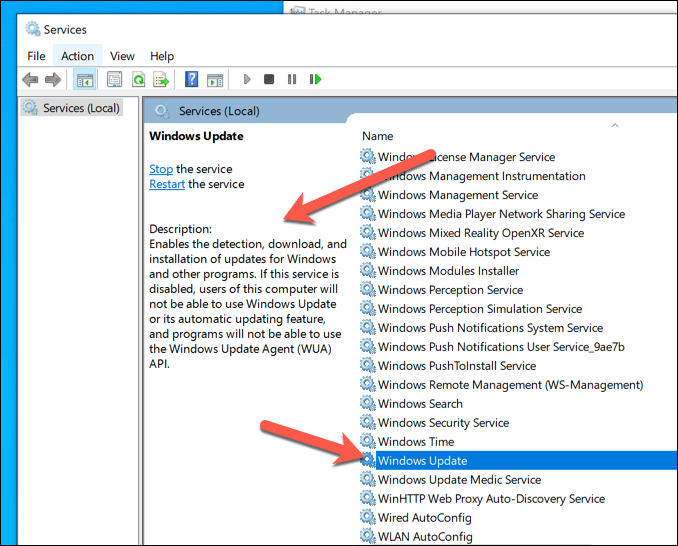
Considering how of import Windows Update is equally a Windows component, information technology'southward fair to say that the Windows Modules Installer Worker process is safety to run. Attempting to end the procedure if it's running, or otherwise interfere with it in any way, tin can cause problems that may issue in broken Windows updates.
It isn't possible to disable the Windows Update service in Windows 10, including tiworker.exe. If y'all try to do and so, it may accept unintended side effects, including breaking other Windows processes or, in a worst-case scenario, stopping your PC from running.
What Causes Windows Modules Installer Worker High CPU Usage Issues?
Different other system processes, such as csrss.exe, information technology's fair to say that you may demand to expect high CPU usage from the Windows Modules Installer Worker procedure. The Windows Update service will use a lot of system resources, especially when a major update is being installed.
This is unavoidable, but the impact on your PC will depend on your available arrangement resource. If a Windows update is existence installed, it may be advisable to close other running apps and let for the process to consummate. This volition ensure that the demands on your PC are lower.
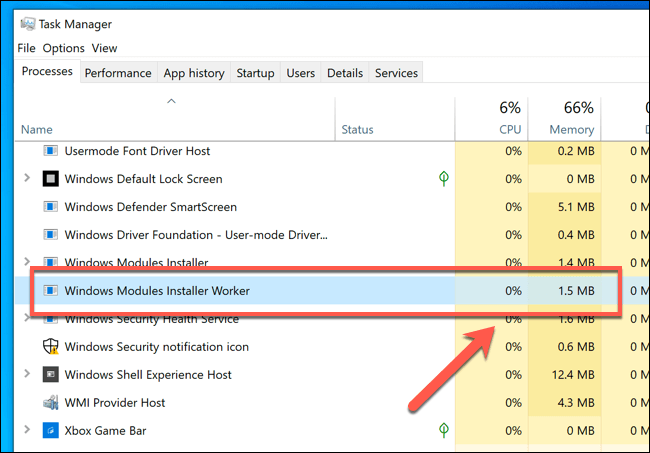
Considering tiworker.exe is only used by Windows while updates are being prepared or installed, then you lot can expect to trace any issues with CPU, RAM, or disk usage dorsum to the Windows Update service.
In one case Windows has finished updating, the Windows Modules Installer Worker process should render to normal or stop entirely until information technology's required once again. If it doesn't, y'all'll need to troubleshoot Windows Update to try and resolve the problem.
Troubleshooting Windows Update Issues
When Windows Update has bug, so you'll see the Windows Modules Installer Worker procedure nether strain in Task Manager. If this is the instance, you can check the current status of Windows Update (and troubleshoot it further) from the Windows Settings carte.
- To check the current condition of Windows Update, correct-click the Start menu and select the Settings selection. This will open the Windows Settings menu.

- In Windows Settings, select Update & Security > Windows Update. If whatever updates are in process (or if an update has failed to update), these will exist listed under the Update Status section. You can check the status of previous updates by selecting the View update history pick.
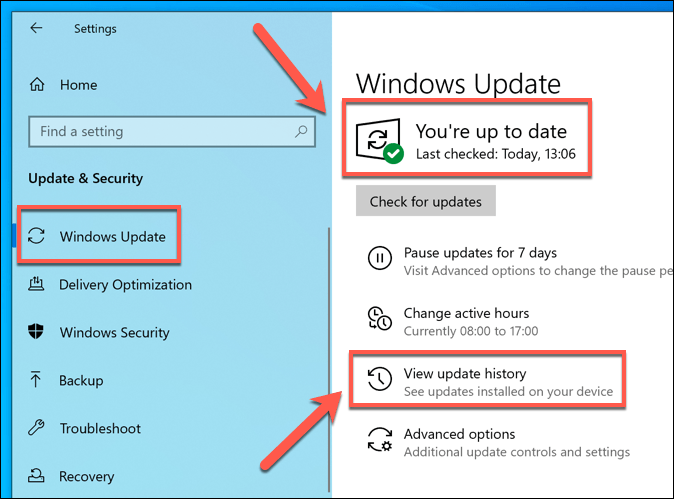
- If updates have failed (or if they won't install), so you can use the Windows Troubleshooter to investigate the trouble. In the Windows Settings bill of fare, select Update & Security > Troubleshoot > Boosted troubleshooters to access the Troubleshooter menu.
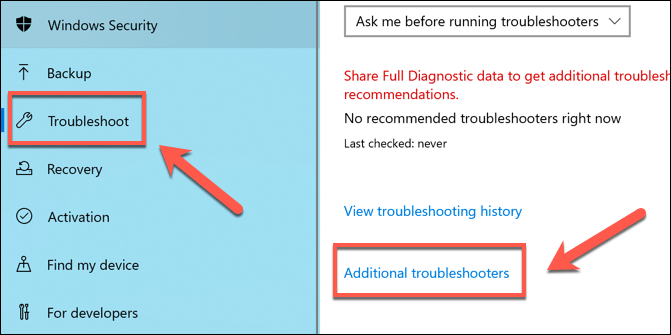
- In the Boosted troubleshooters bill of fare, select the Windows Update pick to brainstorm troubleshooting the Windows Update service (including the linked Windows Modules Installer Worker procedure), selecting the Run troubleshooter button to ostend.
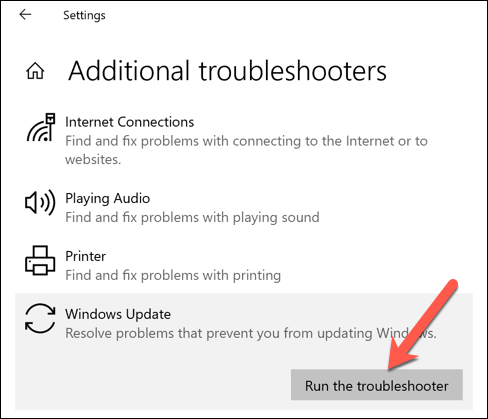
- A separate Diagnostic Troubleshooting Wizard window will open up, with the Windows Troubleshooter automatically scanning and checking Windows Update for issues. If it detects any, it will attempt to fix these automatically, or information technology'll inform you lot about the next steps you can take to prepare them.
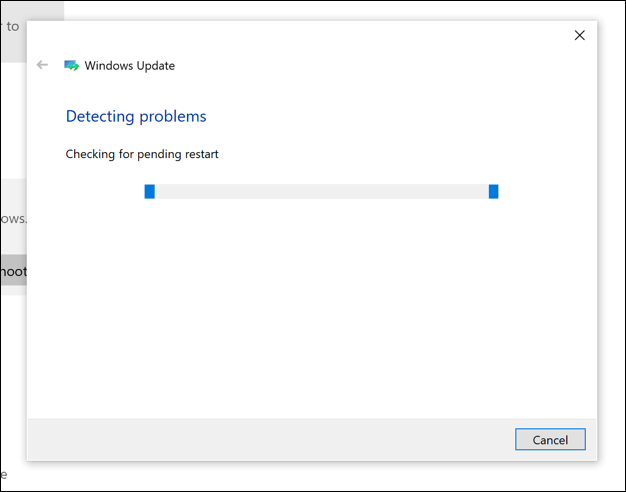
- If yous want to view detailed information about Windows Update, you can select the View detailed information option once the procedure is complete. This will give y'all a breakdown of the checks it completed, allowing y'all to pinpoint whatever potential issues with the service.

How to Cheque If Windows Modules Installer Worker is a Genuine System Process
In some cases, malware volition endeavour to hijack your Windows installation past pretending to be organization process files like tiworker.exe. While this is a rare plenty occurrence in Windows 10, information technology can nevertheless happen, so if your system is infected, you may non realize that not-genuine processes are running until it's too belatedly to forbid harm.
If yous see the Windows Modules Installer Worker procedure with high CPU usage, and yous're confident that Windows Update isn't running (fifty-fifty in the background), and so this could be due to a non-genuine system process. Thankfully, information technology's very like shooting fish in a barrel to cheque whether the tiworker.exe service running on your PC is genuine or not.
- To do this, you'll need to open Windows Task Director. Right-click the taskbar to do this, then select the Task Manager selection.
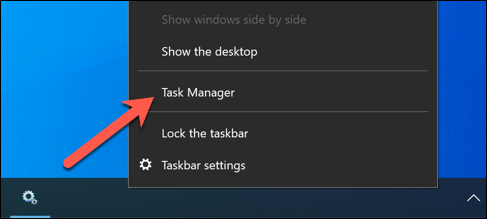
- In the Task Manager window, open the Processes tab and look for Windows Modules Installer Worker (or tiworker.exe in the Details tab instead). Right-click the process, then select the Open up file location option.
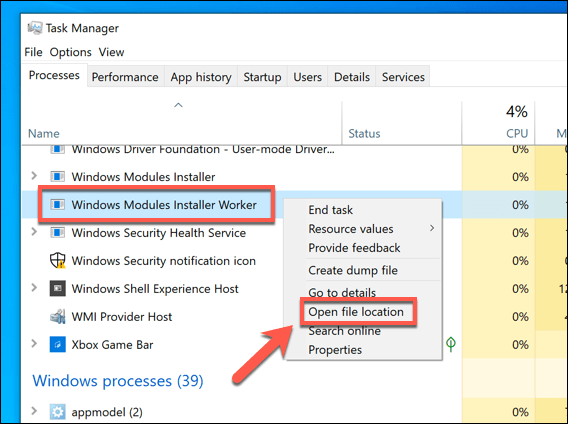
- This volition open Windows File Explorer to the location where the tiworker.exe file is running from. If the file is a genuine system process, this volition locate the file in a subfolder in the C:\Windows\WinSxS directory.

If Windows File Explorer opens in any other location, then the process running on your PC is unlikely to exist the genuine Windows Update process. If this is the example, you lot'll need to schedule an antivirus browse using Windows Defender or by using third-political party anti-malware software.
Protecting Against Rogue Windows Processes
The Windows Modules Installer Worker process is only 1 of many of import, genuine system processes that you'll come across from fourth dimension to time in the Windows Chore Manager. Windows tin can't run without them since they human action every bit the cogs that bring the entire system together, from basic processes like yourphone.exe to the system kernel itself.
Of course, if you lot do find a rogue service on your PC pretending to exist a organisation process, you'll need to stop and run a malware browse at your earliest convenience. While rare, malware tin can and will act to hibernate itself by attaching or replacing system processes. If all else fails, yous may have to wipe and reinstall Windows to solve it.
Do non share my Personal Information.
What Is Windows Module Installer,
Source: https://helpdeskgeek.com/windows-10/what-is-windows-modules-installer-worker-and-is-it-safe/
Posted by: mcginnismanday.blogspot.com


0 Response to "What Is Windows Module Installer"
Post a Comment